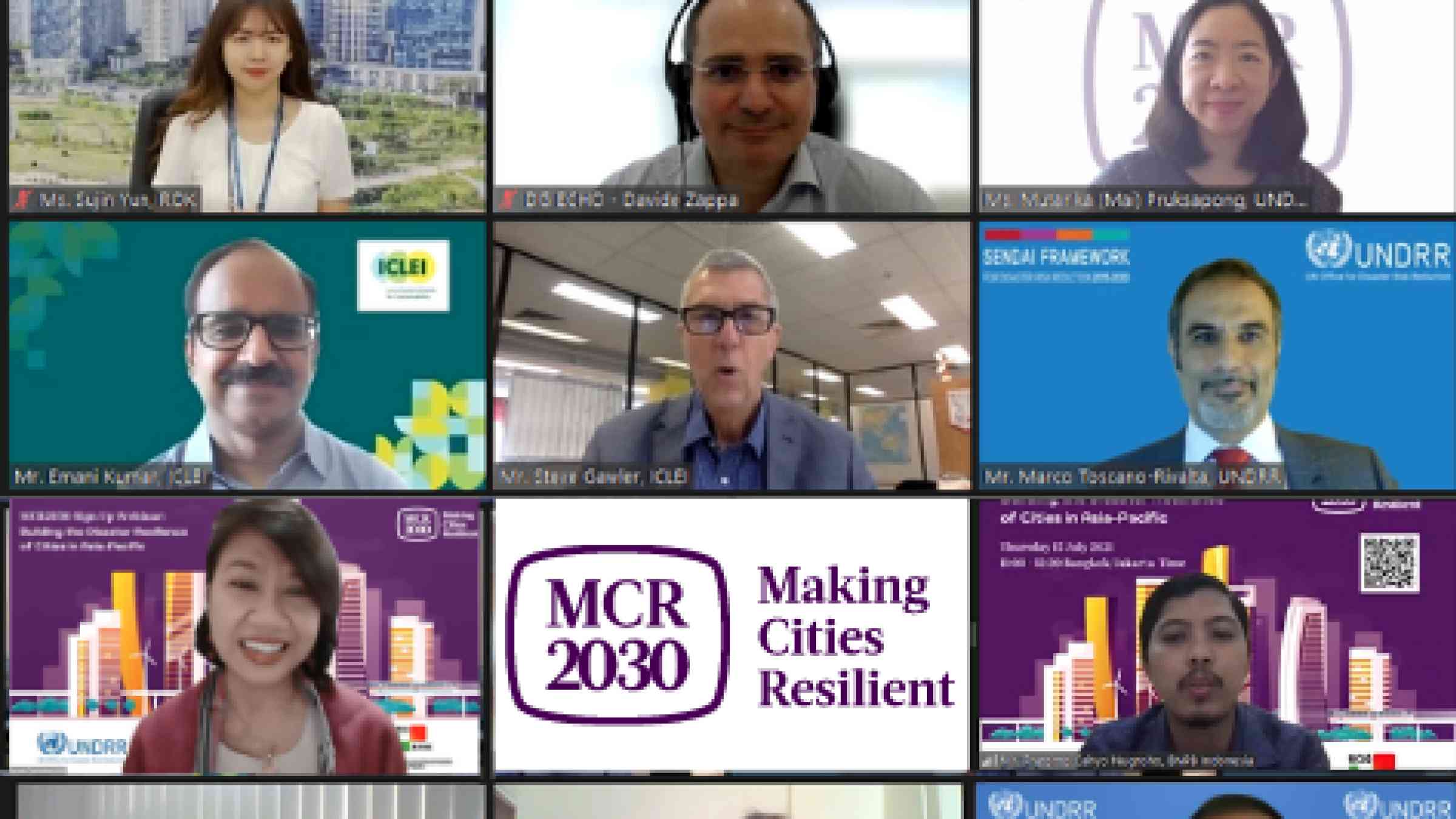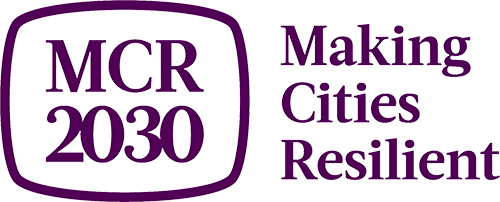Building the disaster resilience of cities in Asia-Pacific

Over the last 20 years, disasters in Asia-Pacific have become more numerous and expensive, and cities are where the impacts of these disasters are most acutely felt. Climate change is one large driver of risk, but urbanization and the increase in population density can lead to the creation of new risks. Moreover, cities are sometimes uniquely vulnerable to certain hazards, such as infectious disease outbreaks, as seen during the COVID-19 pandemic. Therefore, cities need to develop and implement disaster risk reduction and preparedness plans that best suit their environments to protect against a variety of hazards.
To aid this process, the UN Office for Disaster Risk Reduction (UNDRR) and partner organizations co-created the Making Cities Resilient 2030 (MCR2030) initiative, which brings together partner organizations, local officials and stakeholders for a holistic approach to mitigating the impact of disasters.
To explain what MCR2030 entails and learn from the experiences of different cities, UNDRR, Local Governments for Sustainability (ICLEI) South Asia, and the United Cities and Local Governments Asia Pacific (UCLG ASPAC), co-organized a webinar on 15 July 2021, which was attended by 488 participants from across the region.
“At the heart of MCR2030 is cooperation; the intention to create opportunities for demand and supply to meet through initiatives tailored to local needs. It embodies the Sendai Framework principle that disaster risk reduction is a shared responsibility across all stakeholders,” said Mr. Marco Toscano-Rivalta, Chief of the UNDRR Regional Office for Asia and the Pacific, who opened the webinar along with Mr. Emani Kumar, ICLEI’s Deputy Secretary-General and Executive Director of ICLEI South Asia, who added:
“We want to make all of our cities climate resilience Disaster risk-free by the year 2030.”
An overview of MCR2030 was presented by Dr. Bernadia Irawati Tjandradewi, the Secretary-General of UCLG ASPAC, who noted that responsibility for urban resilience goes beyond just local officials:
“National governments definitely have a key role and as well as associations of municipalities, of which there are several in our region. They need to provide support not only around advocacy but also in providing support in scaling up the impact of MCR2030.”
One example of a national government that has committed to supporting local urban resilience is Indonesia, which plans to rollout MCR2030 nationwide, starting with Bali Province as a pilot.
“This will be a pilot project on how national government engage local governments to join MCR under the new scheme. In this case, we emphasize the role of the governor as a go-between national and municipality levels, ” explained Mr. Pratomo Cahyo Nugroho, Disaster Management Governance Coordinator with Indonesia’s National Disaster Management Authority (BNPB).
Another element of urban resilience is ensuring that disaster preparedness measures are in place to minizine harm if a disaster does occur. This point was emphasised by Mr. Davide Zappa, a Thematic Expert with the Regional Office of the European Commission Directorate-General for European Civil Protection and Humanitarian Aid Operations (ECHO):
“We have early, but encouraging evidence that investments to prepare for all types of hazards, natural as well as human-induced threats, as per each context specification, pay dividends.”
Mr. Zappa cited the example of Cotabato City, in the Bangsamoro Autonomous Region in Muslim Mindanao in the Philippines, which was able to pre-emptively disburse cash pay-outs to vulnerable households ahead of heavy rains thanks to ECHO-supported capacity building that improved the monitoring of flood-prone urban areas.
To contextualize the experiences of different cities in building their urban resilience, the webinar also featured speakers from across the region; Nadi Town Council in Fiji, by Ms. Premila Chandra; Incheon City in South Korea, by Ms. Sujin; and Surat Municipal Corporation, by Mr. Kamlesh Yagnik.
While the cities varied greatly in their geography, resources and sizes, all had sought to build their resilience through a combination of better understanding their risks, planning measures to address them, and then putting these plans into action. These three stages are what makes up the MCR2030 ‘resilience roadmap.’
The webinar concluded with a demonstration of how cities can sign up to join the MCR2030 initiative, which was presented by Ms. Mutarika (Mai) Pruksapong with the MCR2030 Global Secretariat, which is based in UNDRR’s Global Education and Training Institute (GETI) in South Korea.
Ms. Pruksapong noted that MCR2030 is not just open to ‘cities’ but also districts, municipalities, provinces, or any local governance division. The most important requirement is that they be committed to urban resilience.
There is no fee or cost for joining or benefiting from the initiative. Cities or organizations that would like to join MCR2030 can find step-by-step guides on the MCR2030 website: https://mcr2030.undrr.org/

